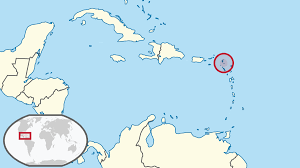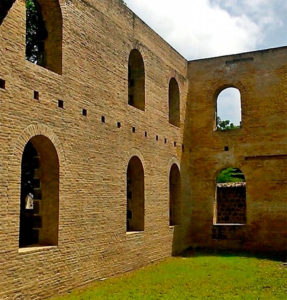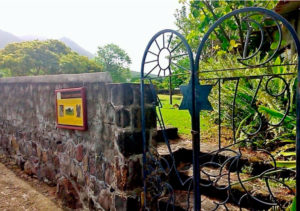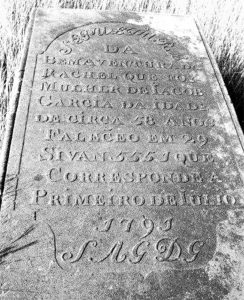 In 1499, Jews were already living in St. Eustatius and the community had built the Chonen Dalim Shul. In 1722, only 21 Jews lived on there but by 1750 the Jewish population had grown to more than 450. These Jews were mostly refugees of Recife-Brazil, Tobago, Surinam, North Africa, Curaçao, and Amsterdam.
In 1499, Jews were already living in St. Eustatius and the community had built the Chonen Dalim Shul. In 1722, only 21 Jews lived on there but by 1750 the Jewish population had grown to more than 450. These Jews were mostly refugees of Recife-Brazil, Tobago, Surinam, North Africa, Curaçao, and Amsterdam.
 Several were Ashkenazi families from the community of Rotterdam. Although Jews had full civil rights, they were excused from serving in the Civil Guard to spare them from Sabbath military duty. In 1737 the community of Honen Dalim was found, and in 1738 permission was given to build a synagogue on the Island.
Several were Ashkenazi families from the community of Rotterdam. Although Jews had full civil rights, they were excused from serving in the Civil Guard to spare them from Sabbath military duty. In 1737 the community of Honen Dalim was found, and in 1738 permission was given to build a synagogue on the Island.
The synagogue was constructed on the site where present-day visitors still find the ruins of the house of prayer in the center of Oranjestad, the capital of St. Eustatius. Built of yellow bricks, the building measures 12.75 meters by 8.50 meters and is situated on a street known to this day as “Synagogue Pad” – Synagogue Path. The walls of the synagogue are about 60 centimeters thick and some 7 meters high; the floor and roof have disappeared, but a flight of stairs leads one to conclude that the synagogue was a two-storied building. Elsewhere on the island is the Jewish cemetery, in which sixteen beautifully carved tombstones have been preserved.
 When Admiral Sir George Brydges Rodney conquered the island in 1781, he pillaged storehouses and confiscated people’s possessions. He noticed that there was a disproportionate number of Jewish funerals, which was unlikely as St. Eustatius Island had been captured without bloodshed. Rodney, who had no love or Jews, opened sealed coffins and found money and jewellery. In revenge, Rodney rounded up the islands approximately 110 male Jews, strip searched them, and exiled thirty of them from the island.
When Admiral Sir George Brydges Rodney conquered the island in 1781, he pillaged storehouses and confiscated people’s possessions. He noticed that there was a disproportionate number of Jewish funerals, which was unlikely as St. Eustatius Island had been captured without bloodshed. Rodney, who had no love or Jews, opened sealed coffins and found money and jewellery. In revenge, Rodney rounded up the islands approximately 110 male Jews, strip searched them, and exiled thirty of them from the island.
They were ordered to give up the keys of their stores, to leave their wealth and merchandise behind them, and to depart the island without knowing the place of their destination.They were and were told to go without their wives and children. The Chonen Dalim Shul was incinerated together with some Jewish homes and crops. Although the building was destroyed, the congregation Honen Daliem survived the ordeal.
 Ultimately, thirty Jews were banished from “Statia” and found sanctuary on the neighboring English island of St. Kitts, whose Assembly to their great honour passed an act for their present relief and future provision until they should have time to recover from their calamitous situation.
Ultimately, thirty Jews were banished from “Statia” and found sanctuary on the neighboring English island of St. Kitts, whose Assembly to their great honour passed an act for their present relief and future provision until they should have time to recover from their calamitous situation.
The other seventy-one Jews were held in custody for three days, and then sent home to watch the sale of their properties. Interestingly enough, several cases concerned Jews who, before they came to St. Eustatius, had served the English. The Jewish tea-merchant Pollock, for example, had previously served the English so well that they even granted him lands on Long Island. He was, nevertheless, so roughly used by Rodney on St. Eustatius that he and others – Samuel Hoheb, among them – petitioned Parliament, which led to an investigation.
By 1818 there were only 5 Jews left on St Eustatius. When the last Jew left St. Eustatius, he brought with him the menorah whose origins could be traced back to Spain. In 2001, Honen Dalim’s walls were rebuilt as a historic, cultural attraction. Her Jewish cemetery was restored. Her Jewish history is honored and respected by Statia.